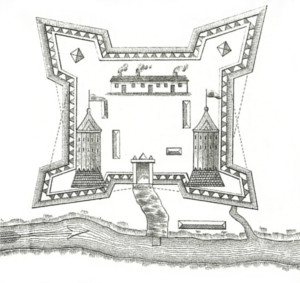The Siege of Fort St. Jean (also John) and the Battle of Quebec were driven by three things: to prevent Canada being used against America by Britain; to win over the French in Canada; and to eventually include Quebec as part of the United States.

Fort Saint-Jean on Richelieu River in Canada during the 1750’s | Public domain image.
Montreal was the final prize, but it could not be taken before the British fort at St. Jean (also known as St. John). George Washington assigned this task to General Richard Montgomery and Colonel Benedict Arnold. They had a long way to march and by the time they arrived, they had lost about half their men. Some of them had reached the end of their term, some deserted, and some died of an illness that swept the Continental Army. The Fort was defended by the English and the Americans knew that mounting a full-scale attack would be futile. They chose instead to cut the supply lines and starve the residents, lay siege to the fort, and draw them out.
They employed their artillery and destroyed most of the buildings inside the fort. The British were expecting help from General Guy Carleton from Montreal, but at the news that the Americans had taken over the nearby Fort Chambly, they knew no help was coming.
The siege took weeks, and although successful, wasted valuable time which led to the loss of Quebec and ultimately the loss of Canada. On November 3, the British commander of the fort, Major Charles Preston, approached the Americans to discuss terms for surrender with very little loss of life on either side.
General Carleton headed to Montreal, and, deciding that it was indefensible, left for Quebec City, fooely escaping the American troops. Montreal fell with little to no fighting.


